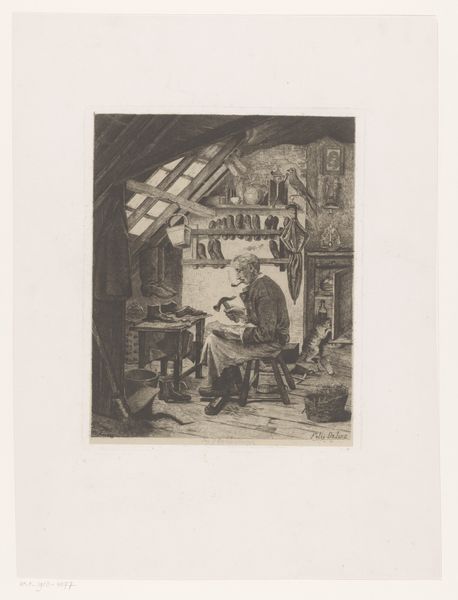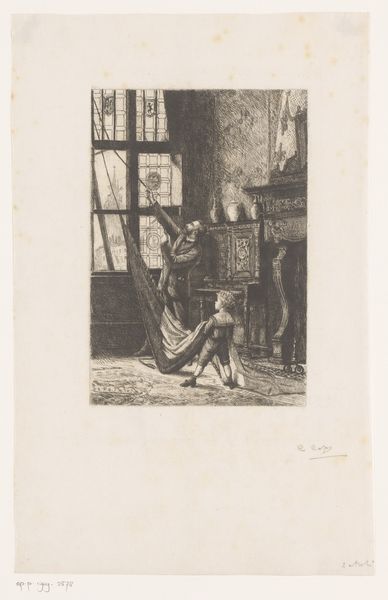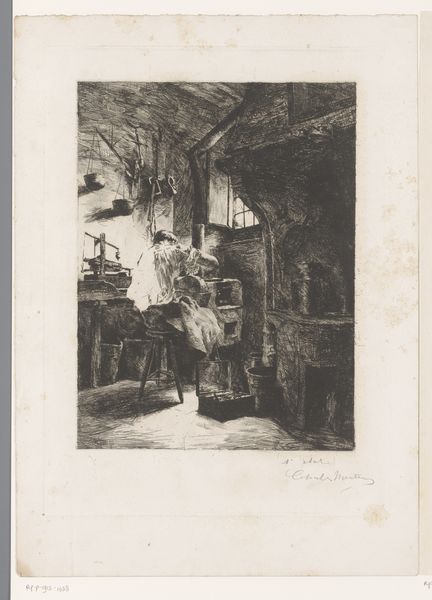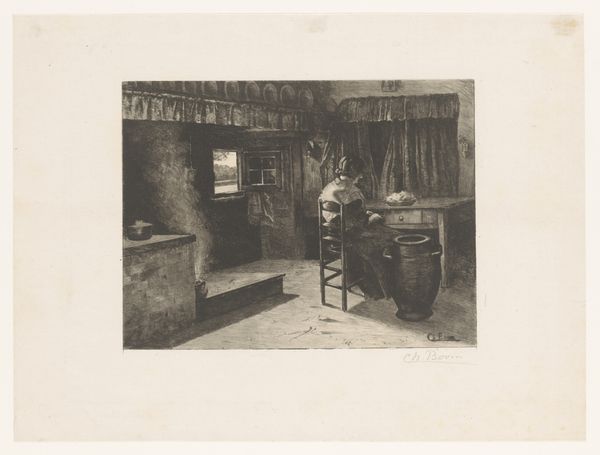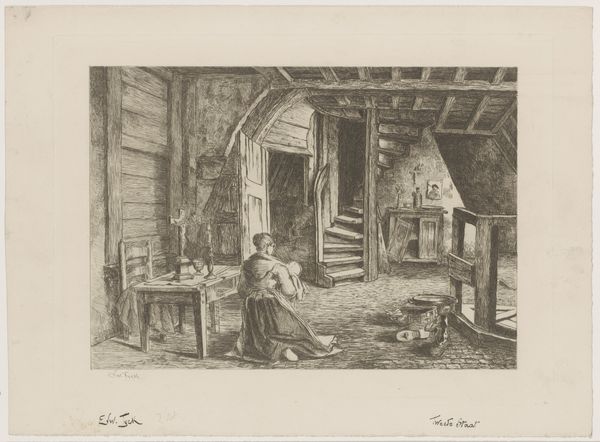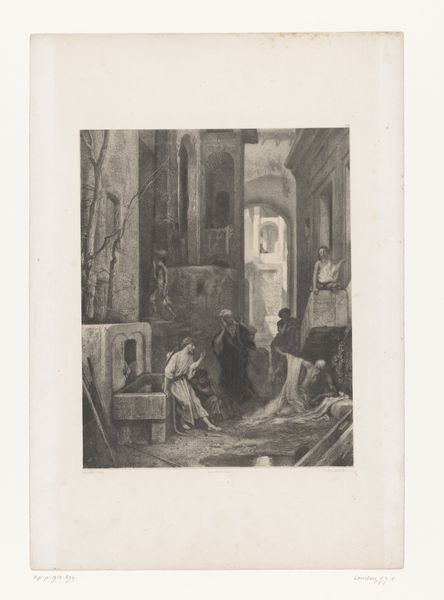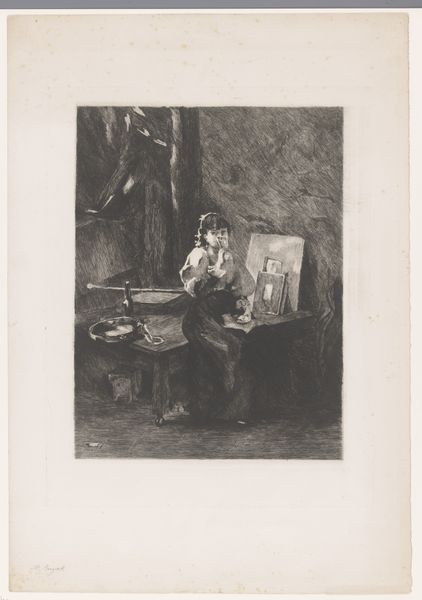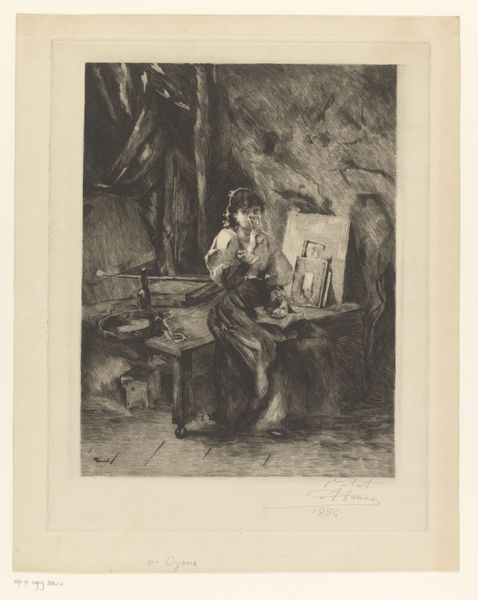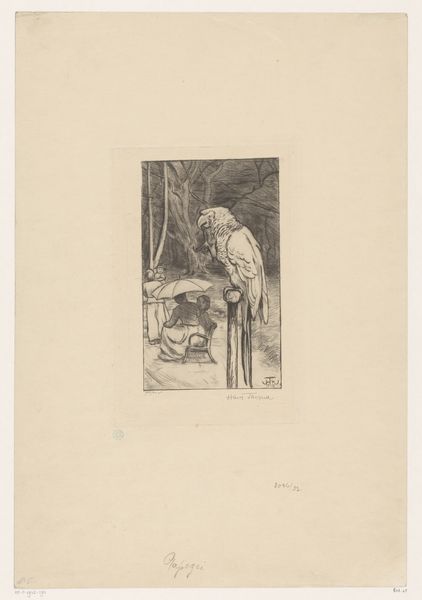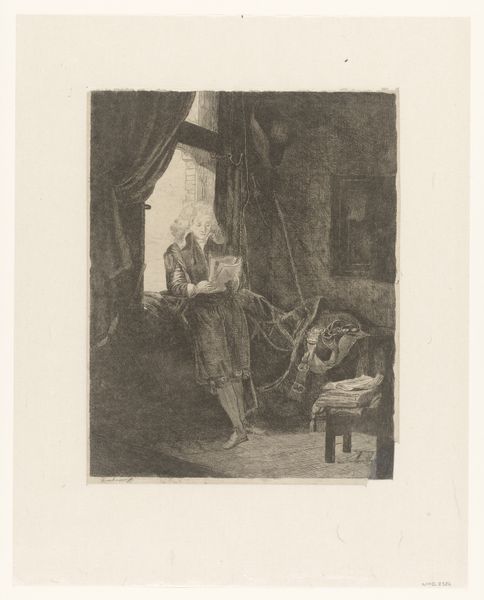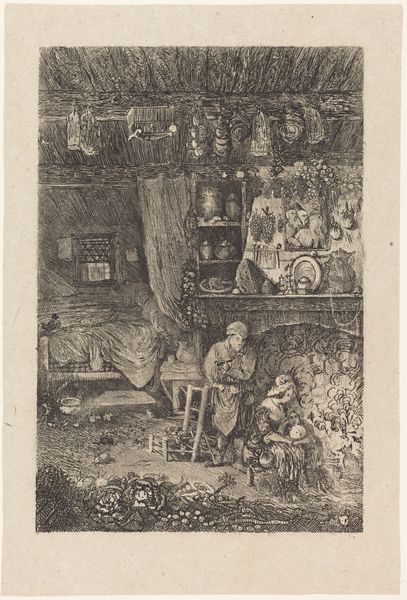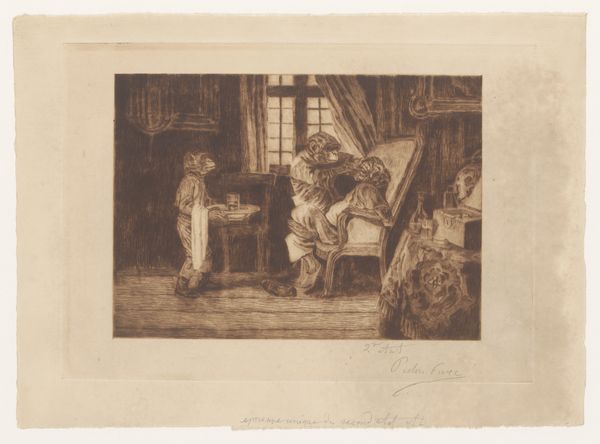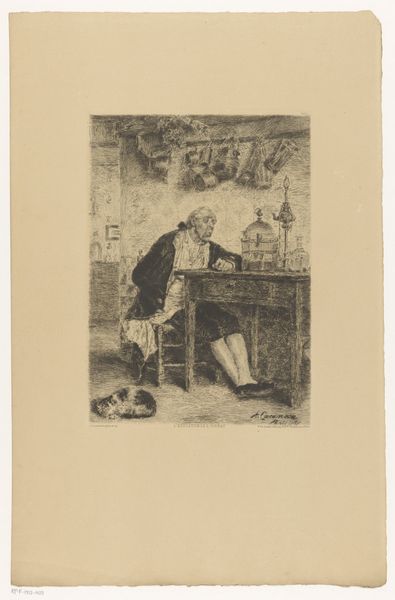
drawing, ink, sculpture
#
portrait
#
drawing
#
ink
#
pencil drawing
#
sculpture
#
genre-painting
#
realism
Dimensions: height 317 mm, width 237 mm
Copyright: Rijks Museum: Open Domain
Editor: This is "Man Sitting at a Table in a Room Full of Sculptures and Busts," an ink and pencil drawing by Léon Brunin, sometime between 1871 and 1909. It has this sort of intimate feel, like a peek into a private world, crammed with both everyday objects and classical sculpture. What jumps out at you when you look at this piece? Curator: What strikes me is the artist's representation of artistic labor. We see not just a finished artwork, but the artist's workspace, tools, and perhaps even his living space. The emphasis on the everyday objects—the table, the teapot—alongside the sculptures, invites us to reconsider the hierarchies of artistic value. Consider the economics of art-making during this period. How does this portrayal of a working artist's environment challenge the romanticized notion of artistic genius divorced from material conditions? Editor: So you’re suggesting the drawing isn’t just about showing us a scene, but making a statement about the process of making art itself? Like, it's about the work, not just the finished product? Curator: Precisely. Notice the medium—ink and pencil, readily available, accessible materials. The drawing itself becomes a form of labor, a product of specific choices related to material availability and economic constraints. And what about the social context? Is this scene meant to romanticize, or perhaps demystify, the role of the artist within a rapidly industrializing society? Editor: That's really interesting. I hadn't thought about it in terms of the actual physical work of being an artist, more in terms of the...feeling of the scene, I guess? Now I'm seeing all those busts as products, too, not just art. Curator: Indeed. And perhaps this challenges our preconceived notions of what constitutes "high art" versus "craft." The drawing makes one reflect on this theme of blurring those lines. Editor: I never considered analyzing a drawing this way. I am leaving with a new framework for understanding how the materials, process, and social context influence art and can reshape what art itself represents.
Comments
No comments
Be the first to comment and join the conversation on the ultimate creative platform.
